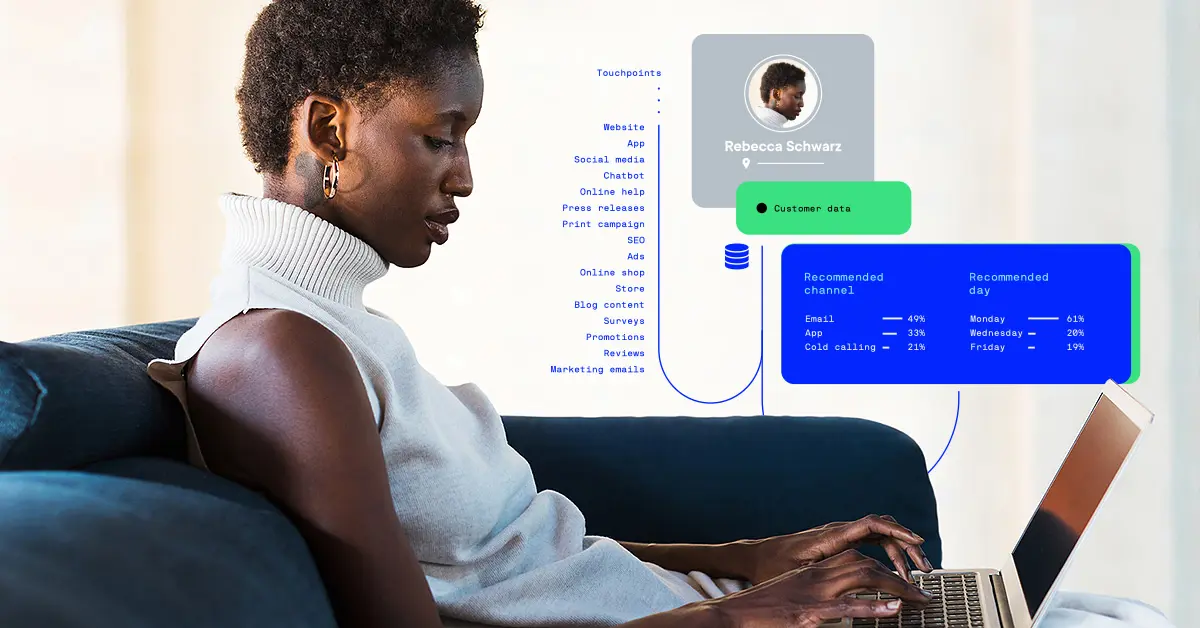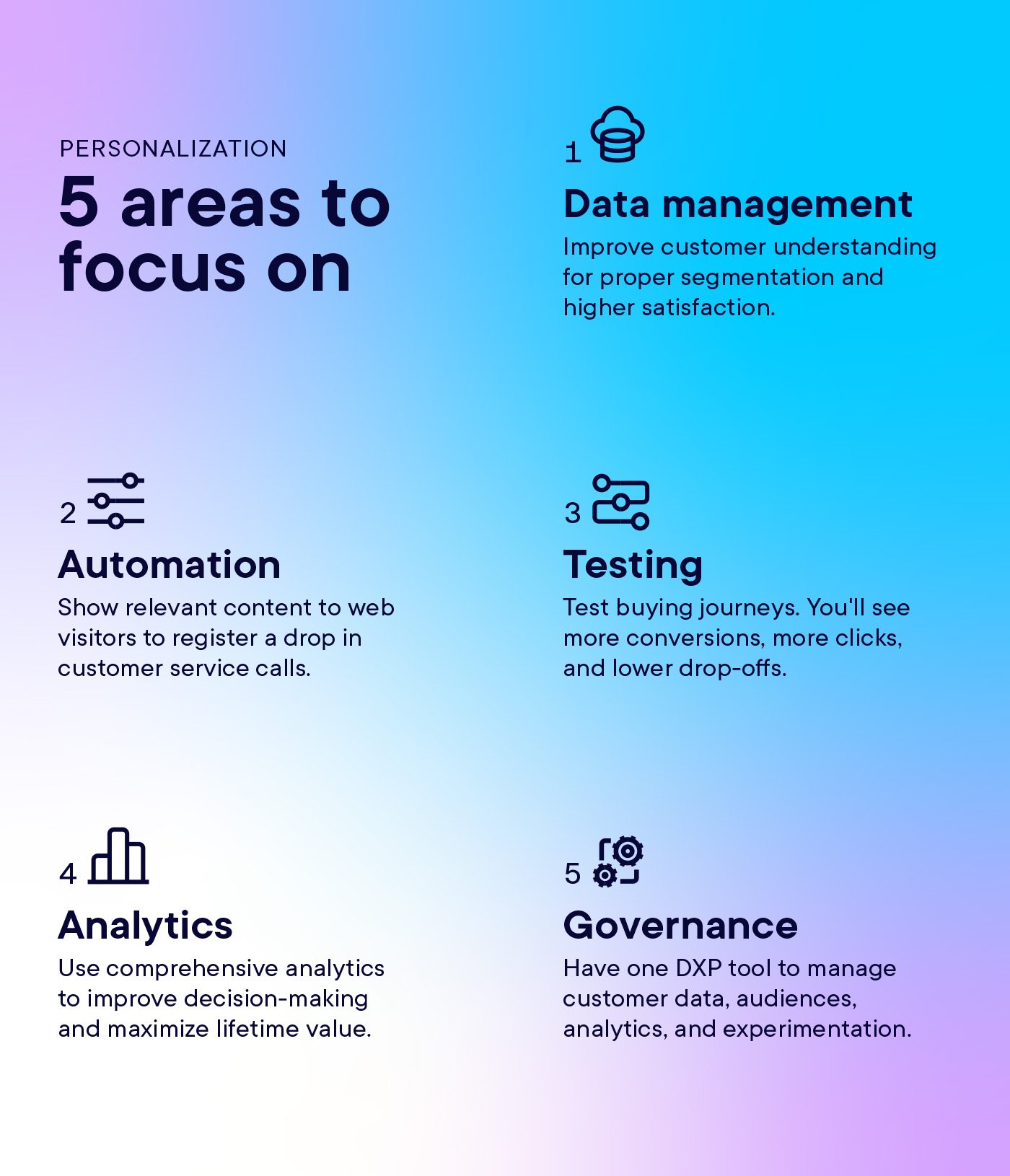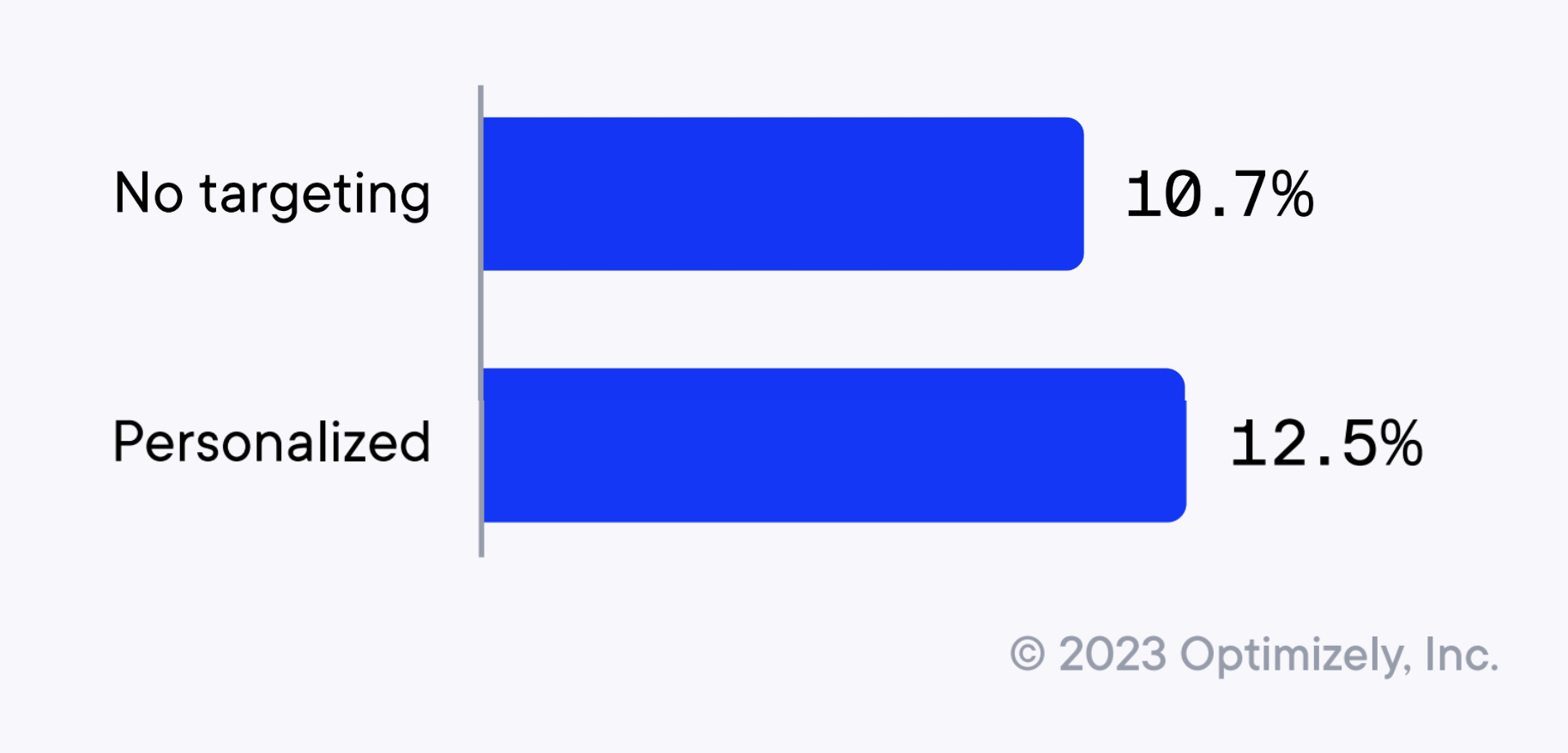1:1 Personalization: How to create omnichannel experiences at scale
Learn what 1:1 personalization is, why it's important, and how to use robust data collection and analysis to deliver a personalized customer experience.

Anubhav Verma

Customer experiences are becoming more personalized. When you have thousands and millions of users, personalization becomes essential.
Not to make the experience pretty but so that your visitors can find what they're looking for. For example, a dog walker will look for an unbreakable leash or a yoga instructor will care about finding a mat with ease of use.
The only way to consistently reach a good level of personalization is to know enough about each customer. Customer knowledge comes from the collection and analysis of customer data.
Data enables you to:
- Make faster and more informed decisions
- Better understand your customers' needs and expectations
- Provide your customers with the personalized experiences they crave.
So, what does personalization cover?

Keep reading to learn more.
What is 1:1 personalization?
The phrase "1:1 personalization" refers to delivering a unique and uniquely personalized experience to each customer. Also known as omnichannel personalization, it applies across all channels.
You can show personalized content, products, and offers to specific customers. Customers expect the same personalized experience no matter how and where they experience your company, brand, and products. When customers receive a consistent omnichannel experience, they will purchase more and more frequently.
In its most basic form, personalization covers two components:
WHAT: The change you make in the default digital experience
WHO: Delivered to a specific user or group
For example, change the homepage hero banner for our returning customers. Looking at the lessons learned from 127K experiments, roughly half of all experiments run around the world today use audience targeting.
They define the WHO also and these personalized experiments generate a 41% higher impact compared to general experiences.

Source: Lessons learned from 127k experiments
Why is personalization important?
In 2024, you can't show the same recommendations to every visitor on your website. It is an approach that no longer works.
You have to ask yourself if your website’s experience resonates with the customer.
According to McKinsey's Next in Personalization 2021 Report, 71% of customers expect companies to provide personalized interactions—and 76% of customers get disappointed when personalization isn't offered.
To learn more about the impact of personalization, Optimizely surveyed 100+ marketing leaders regarding the best personalization practices out there.
Check out the learnings in this personalized to-personal guide.
When personalizing, keep in mind:
- The exact changes you want to make in the default customer experience
- Who do you want to deliver it to
- If the changes you're making meet business goals
- The tool you'll use to create personalized experiences
What can you personalize?
The list of items you can personalize includes:
- Product pages
- Pricing pages
- Landing pages
- Website homepages
- Offers, deals, and coupons
- Product recommendations
- Location-based services
- And more...
It's all about creating customer journeys that provide a comprehensive view from the customers' perspective.
It's all about creating a customer journey that considers the customers' perspective and takes them to the buying moment through a path with the least friction.
And how do you do that? By collecting and analyzing relevant customer data.
You collect customer data such as:
- Location and contact information
- Demographic information (age, gender, education level)
- Purchasing information
- Website browsing information
All of the above information is relevant and useful in developing detailed customer profiles.
Personalization examples:
- Based on the browsing behavior, send personalized offers to shoppers.
- Offer budget travel promotions to college students and honeymoon getaways to newlyweds.
- Show best-performing videos to viewers from their favorite creators online.
Enabling 1:1 personalization requires intimate knowledge of what individual customers want, need, and expect. How do you gain that knowledge? By collecting and analyzing relevant customer data.
How can customer profiles help you deliver a 1:1 experience?
The goal of developing customer profiles is to determine what makes each customer tick.
You need to understand customers' needs and expectations, so you can create products and services that meet their needs and an experience that meets their expectations.
Each customer profile should tell you:
- Where they live
- What they like to do (interests, hobbies, etc.)
- What do they like to buy
- What are they searching for
- What devices and channels do they use frequently
- Where do they look for product information
The more insight you have into customer behavior and motivation, the easier it is to create a 1:1 personalized experience for each customer.
You need to go granular. It's not enough to know that a given customer is middle-aged, has a college education, lives in the suburbs, and likes to spend time on Facebook.
You need to understand what motivates each customer and what influences their buying behavior. That requires robust analytics and critical thinking and is possible when you aggregate data stored in separate silos or databases.
Check out the below video to see how Calendly delivers world-class personalized experiences for 20 million users.
Manage every aspect of 1:1 personalization with one tool
Most personalization tools either cater to developers or practitioners, resulting in disparate solutions. The most efficient way to deliver 1:1 personalization is to use a system that streamlines the way content gets created and data gets actioned.
Optimizely One analyzes and uses customer data to customize the experience for each customer. You can then deliver personalized content via multiple channels, including websites, social media, email, and newsletters, for a truly omnichannel experience.
Evolve your system with one unified workflow accelerated by AI, making it simple for your optimization teams to create, manage, deliver, test, and run content all in one place.
Learn more about it here.
Keep learning
Here’s a list of the best personalization and experimentation resources to keep you going.
